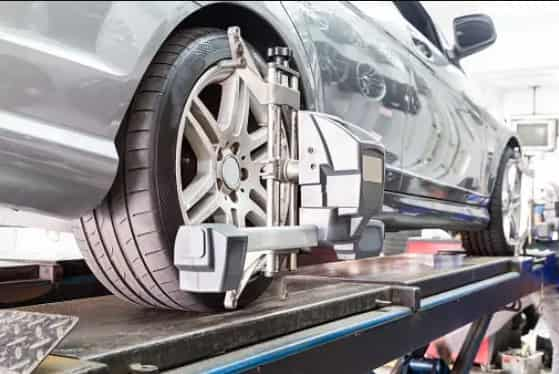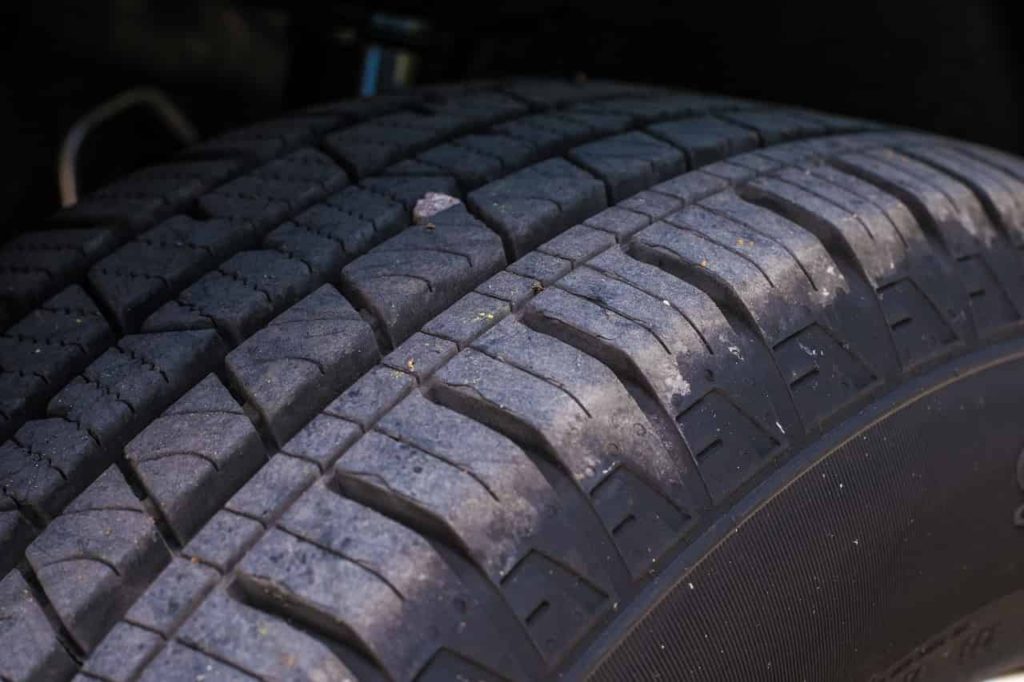Introduction
Tire alignment, often referred to as wheel alignment, is a critical aspect of vehicle maintenance that is often overlooked by many drivers. It involves adjusting the angles of the wheels to ensure they are perpendicular to the ground and parallel to each other. This precise adjustment plays a fundamental role in maintaining optimal tire performance, safety, and overall vehicle stability.
Without proper tire alignment numerous issues can arise leading to compromised handling capabilities and increased wear on both tires and suspension components. Understanding the importance of tire alignment and its impact on your vehicle’s performance is essential for every responsible driver.
What is Tire Alignment?
Tire alignment can be defined as the process of adjusting the angles at which your vehicle’s wheels make contact with the road surface. The angles typically adjusted during a tire alignment procedure include the camber angle, toe angle, and caster angle. These adjustments ensure that all four wheels are positioned correctly according to manufacturer specifications.
The camber angle refers to the vertical tilt of each wheel when viewed from the front or rear of the vehicle. When properly aligned all four wheels should have an equal and slightly negative camber angle for most vehicles. If this angle deviates from its recommended value it can lead to uneven tire wear and reduced stability during cornering.
The toe angle refers to whether your wheels are pointing inward (toe-in) or outward (toe-out) when viewed from above. Ideally your tires should be set parallel to each other for proper toe alignment. Incorrect toe settings can cause excessive tire scrubbing or dragging which increases rolling resistance and consequently decreases fuel efficiency.
Importance of Tire Alignment
The significance of tire alignment cannot be overstated when it comes to ensuring optimal vehicle performance and safety. Proper alignment not only enhances the handling characteristics of your vehicle but also plays a crucial role in extending the lifespan of your tires.
When your wheels are correctly aligned it allows for even distribution of the vehicle’s weight across all four tires. This even weight distribution promotes uniform tire wear, preventing premature wearing out and potentially saving you from the hassle and expense of frequent tire replacements.
Tire alignment directly affects steering response and overall vehicle stability. Misaligned wheels can cause your vehicle to veer to one side, requiring constant steering corrections to maintain a straight path.
This not only compromises your driving experience but also poses a safety risk on the road. By ensuring proper alignment you can enjoy improved handling precision and stability that allows for safer maneuvering in various driving conditions.
Understanding Tire Alignment
Purpose of Tire Alignment
The purpose of tire alignment is to ensure that all four wheels are parallel to each other and perpendicular to the ground. This precise alignment is crucial for optimal vehicle performance, safety, and tire longevity. The primary goal of tire alignment is to distribute the weight evenly across all four tires allowing them to roll smoothly and reduce unnecessary friction.
Proper alignment ensures that your tires wear evenly, resulting in a longer lifespan for your tires and saving you money in the long run. It also enhances your vehicle’s handling capabilities and minimizes resistance while driving that leads to better fuel efficiency.
Components Involved in Tire Alignment Process
Achieving proper tire alignment involves adjusting three critical parameters: camber angle, toe angle, and caster angle. These angles play a significant role in determining how your vehicle handles various driving conditions.
1. Camber Angle: The camber angle refers to the inward or outward tilt of the tire when viewed from the front or rear of the vehicle. A slight inward tilt (negative camber) is preferred for most vehicles as it helps improve stability during cornering by maximizing tire contact with the road. However excessive negative or positive camber can result in uneven tire wear.
2. Toe Angle: The toe angle measures whether your tires are pointed inward or outward when viewed from above. A slight toe-in or toe-out setting helps compensate for suspension deflection during normal driving conditions and assists with straight-line stability. Incorrect toe angles can lead to rapid tread wear on either side of your tires.
3. Caster Angle: The caster angle determines how far forward or backward your vehicle’s steering axis is tilted when viewed from its side. It contributes to steering stability, self-centering, and the ability to maintain directional control. Proper caster angle adjustment ensures a balanced steering feel and improves overall handling.
Understanding these components and their impact on your vehicle’s performance is crucial in comprehending the importance of tire alignment. Neglecting alignment can result in uneven tire wear, compromised safety, reduced fuel efficiency, and premature suspension component failure.
How Tire Alignment Works
Tire alignment is a crucial aspect of vehicle maintenance that involves the meticulous adjustment of various angles that govern the relationship between tires and the chassis. Understanding how tire alignment works allows us to appreciate its significance in preserving both performance and safety on our journeys.
Inspection and Assessment of Current Alignment Status
The tire alignment procedure commences with an inspection to gauge the current alignment status. This assessment typically involves utilizing specialized tools such as laser or computerized systems to measure specific angles.
Highly trained technicians meticulously examine the three primary parameters: camber angle, toe angle, and caster angle (if applicable). These measurements serve as a baseline for determining any deviations from the manufacturer’s specifications.
Adjustment of Camber Angle
One critical aspect of tire alignment pertains to the adjustment of the camber angle. The camber refers to the vertical tilt inward or outward at which a wheel rests when viewed from the front. If an inspection reveals an improper camber angle, corrective measures must be taken.
Suspensions may require adjustments or component replacements to ensure that each tire maintains proper contact with both sides during driving maneuvers. By achieving ideal camber angles tires can distribute stress evenly across their tread surfaces, promoting uniform wear.
Adjustment of Toe Angle
Another fundamental element in aligning tires is adjusting the toe angle. The toe angle determines the direction in which tires point relative to the centerline of the vehicle.
Misaligned toe angles can cause tires to either turn inward or outward resulting in uneven tire wear and compromised handling. Skilled technicians use specialized tools to make precise adjustments that ensure all tires work together harmoniously, promoting optimal grip and stability on the road.
Adjustment of Caster Angle
In certain vehicles equipped with a double-wishbone or MacPherson strut suspension system, a caster angle adjustment might be necessary during the alignment process. The caster angle refers to the forward or backward tilt of the steering axis when viewed from the side. Correctly aligning this angle ensures that the tires self-center and enhances stability while allowing for smooth maneuverability. By adjusting the caster angle technicians optimize steering response and minimize unnecessary tire wear. This provides drivers with greater control over their vehicle’s trajectory.
Benefits of Proper Tire Alignment
Improved Handling and Steering Response
Proper tire alignment plays a crucial role in enhancing your vehicle’s handling and steering response. When your tires are correctly aligned they work together harmoniously to maintain optimal contact with the road surface.
This results in improved road grip, ensuring that your vehicle responds precisely to your steering inputs and maneuvers. Whether you’re navigating sharp turns or cruising on a straight highway, aligned tires provide a smoother and more controlled driving experience.
Enhanced Fuel Efficiency
Did you know that proper tire alignment can positively impact your fuel efficiency? When your wheels are misaligned they create unnecessary resistance against the road surface causing your vehicle’s engine to work harder in order to maintain speed. This increased effort results in higher fuel consumption.
With properly aligned tires friction is minimized allowing for smoother rolling motion and decreased energy expenditure. By aligning your tires at regular intervals you can optimize fuel efficiency and enjoy more mileage per gallon.
Increased Tire Lifespan & Reduced Wear on Suspension
One often overlooked benefit of maintaining proper tire alignment is an extended lifespan for your beloved rubber companions. Misaligned tires tend to wear unevenly since there is an unequal distribution of weight and pressure exerted on them while navigating the roads.
This leads to faster deterioration of tread patterns and may necessitate premature replacement of tires. On the other hand when alignment is accurate each tire experiences consistent wear across its surface area which maximizes their lifespan.
Properly aligned wheels alleviate unnecessary stress on suspension components such as shocks or struts by ensuring that forces are evenly distributed. By mitigating excessive strain on these vital parts of your vehicle’s suspension system, proper alignment helps reduce wear and tear resulting in long-term cost savings and maintaining the overall integrity of your vehicle’s suspension.
Consequences of Misaligned Tires
Uneven Tread Wear
One of the telltale signs of misaligned tires is uneven tread wear. When your wheels are not properly aligned, specific areas of the tire tread endure more friction against the road surface than others.
This can lead to irregular patterns of wear such as cupping or feathering, which compromises traction and safety. It’s crucial to address this issue promptly since prolonged use with misaligned tires can render them unsafe for operation and may even result in costly tire replacements.
Decreased Fuel Efficiency
Misaligned tires not only impact handling but also affect your vehicle’s fuel efficiency. When wheels are not aligned correctly, increased rolling resistance occurs due to the improper distribution of weight on each tire.
As a result more power from your vehicle’s engine is required to propel it forward leading to decreased fuel efficiency over time. By neglecting proper alignment you may find yourself burdened with more frequent visits to the gas station and a noticeable dent in your wallet.
Reduced Vehicle Stability and Control
When your tires are misaligned it directly affects your vehicle’s stability and control on the road. Misalignment causes an imbalance in steering forces between the left and right sides of your vehicle. Consequently you may experience a persistent pulling sensation towards one side while driving straight or encounter difficulty maintaining a steady course during turns or lane changes.
This compromised stability can jeopardize both your safety and that of others on the road. This is why it’s imperative to recognize these symptoms early on and seek professional assistance for realigning your tires promptly.
How do you Know When You Need a Tire Alignment?
Vehicle Pulling to One Side
If you notice your vehicle pulling to one side while driving on a straight road it’s a strong indication that your tires may be misaligned. This can occur due to uneven tire wear or issues with the suspension components.
Uneven or Rapid Tire Wear
Inspecting the tread of your tires can provide valuable insight into their alignment status. Uneven wear patterns across the tread indicate misalignment. Pay close attention to any signs of cupping, scalloping, or feathering as they suggest issues that require immediate attention.
Steering Wheel Vibration or Shaking
Experiencing steering wheel vibrations or shaking while driving is often associated with tire misalignment. These symptoms occur due to an imbalance caused by irregularities between tire contact and the road surface. If you encounter such vibration head to an automotive repair shop and explain when the shaking or vibrating occurs.
Conclusion
Maintaining proper tire alignment is paramount for a safe and enjoyable driving experience. The benefits of aligning your tires cannot be overstated.
By paying attention to signs that indicate misaligned tires you can take proactive measures to address alignment issues promptly. Regularly consulting automotive professionals for tire alignments will not only enhance safety but also ensure optimal performance and longevity of your tires.
Remember: investing in a proper tire alignment not only saves you money in the long run but also provides peace of mind knowing that you are maximizing both your vehicle’s performance and your overall driving experience. So, prioritize your tire alignment and let the road ahead be a smooth and joyful journey!





